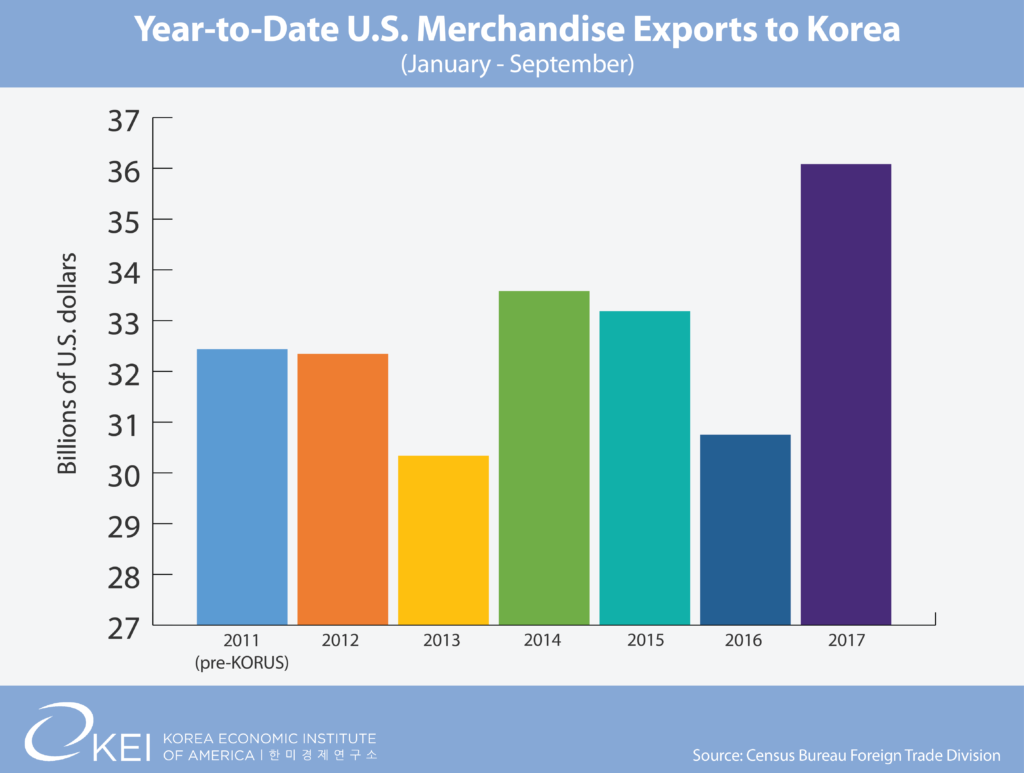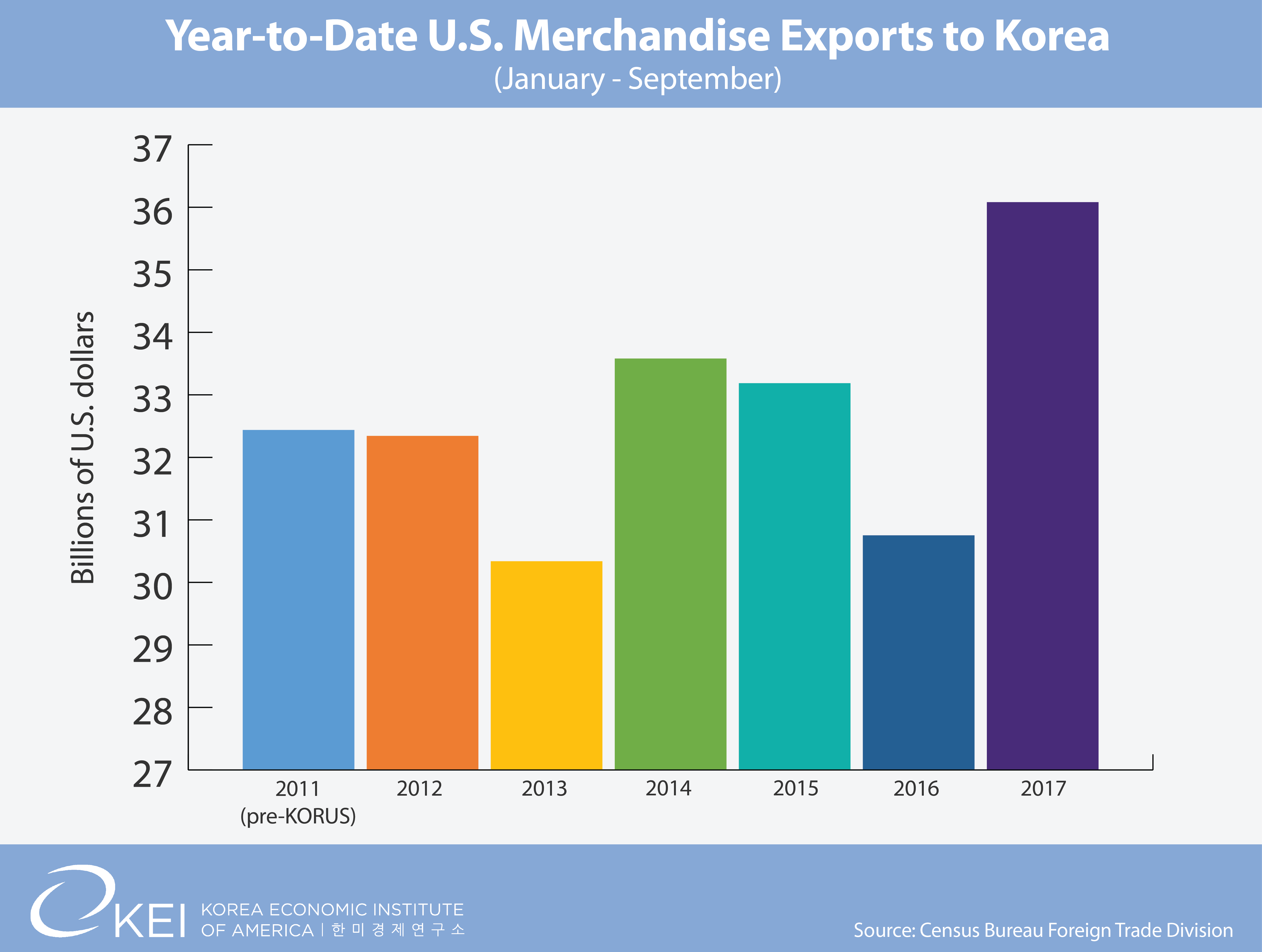The Peninsula
U.S. Poised to Set a Record Level of Merchandise Exports to Korea in 2017

By Phil Eskeland
As President Donald Trump left Washington, D.C. to travel to Asia, the Department of Commerce released the latest set of trade data for the month of September. The emphasis on boosting merchandise exports of U.S. manufactured goods and agricultural products remains a singular focus of the Trump Administration as it tries to improve the economy, particularly in the Midwest of the United States.
There continues to be good news with respect to Korea. The bilateral merchandise trade deficit between the U.S. and Korea continues on a lower trajectory. For the first nine months of this year, the two nation’s bilateral merchandise trade imbalance in 24 percent less as compared to the same time period last year.
One reason for this downward trend in the bilateral trade deficit is that the U.S. is on track to reach a record year in exporting merchandise goods to South Korea. Between January and September of this year, the U.S. shipped $36.1 billion in merchandise goods to Korea – a level that has surpassed the previous record set in 2014.

On average, the U.S. has exported about $4 billion of goods to Korea during each month thus far in 2017. If this pace continues with only three months left in the year, the U.S. could export as much $48 billion of merchandise goods to Korea in 2017, approximately $4.5 billion higher than the pre-Korea-U.S. Free Trade Agreement (KORUS FTA) level set in 2011. Thus, the U.S. is well on its way toward fulfilling the forecast by the independent U.S. International Trade Commission (USITC) that once the KORUS FTA is fully implemented in 2022, “merchandise exports to Korea would likely increase by an estimated $9.7 billion – $10.9 billion as a result of tariff and TRQ (tariff-rate quota) provisions.” The U.S. is nearly half-way towards this objective.
As the President and his economic team deliberate the future of the KORUS FTA with their South Korean counterparts, this new set of trade statistics from the U.S. government should inform their discussions that the agreement continues to work well.
Phil Eskeland is Executive Director for Operations and Policy at the Korea Economic Institute of America. The views expressed here are his own.
Photo from Steffen Korn’s photostream on flickr Creative Commons.
